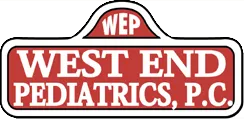Main Symptom
- Clear nasal discharge with sneezing, sniffing, and nasal itching
- Eye allergies (itchy, red, watery and puffy) are commonly associated
- Ear and sinus congestion may also be associated
- A tickling, scratchy sensation in the back of the throat can be associated
- Itchy ear canals, itchy skin, and hoarse voice are also seen
- Symptoms occur during pollen season
- Similar symptoms during the same month of the previous year
- No fever
- Cause: Hay fever is an allergic reaction of the nose and sinuses to an inhaled substance, usually pollen.
See More Appropriate Topic
- If doesn't look like hay fever, see COLDS
Call Your Doctor within 24 Hours (between 9 and 4) If
- You think your child needs to be seen
- Lots of coughing
- Lots of yellow or green secretions from the nose present > 3 days
Call Your Doctor during Weekday Office Hours If
- You have other questions or concerns
- Hay fever symptoms interfere with sleep or school after taking antihistamines for 2 days
- Diagnosis of hay fever has never been confirmed by your doctor
- Year-round symptoms of nasal allergies
Parent Care at Home If
- Hay fever and you don't think your child needs to be seen
Home Care Advice for Hay Fever
-
Antihistamines: Give antihistamines continuously during pollen season (continuously is the key to control).
- Chlorpheniramine (CTM) (eg chlortrimeton) products are effective and don't need a prescription. (Any antihistamine you have will do, but others may cause more drowsiness.)
- See dosage chart for CTM
- The bedtime dosage is especially important for healing the lining of the nose.
- Long-acting products (less dosages per day) and combination antihistamine-decongestant products (less-sedating) may be more helpful.
- Eye Allergies: For eye symptoms, wash the pollen off the face and eyelids. Then apply cold compresses. Antihistamine vasoconstrictor eyedrops (no prescription needed) will also help.
- Wash Off Pollen: Remove pollen from the nose with nasal washes (using warm tap water) whenever needed. Instill 2 or 3 nosedrops in each nostril followed by blowing the nose. Repeat until open. Remove pollen from the hair and skin with hair-washing and a shower, especially before bedtime.
- Expected Course: Since pollen allergies recur each year, learn to control the symptoms.
-
Call Your Doctor If
- Symptoms aren't controlled in 2 days with continuous antihistamines
- Your child becomes worse or develops any of the "Call Your Doctor Now" symptoms










